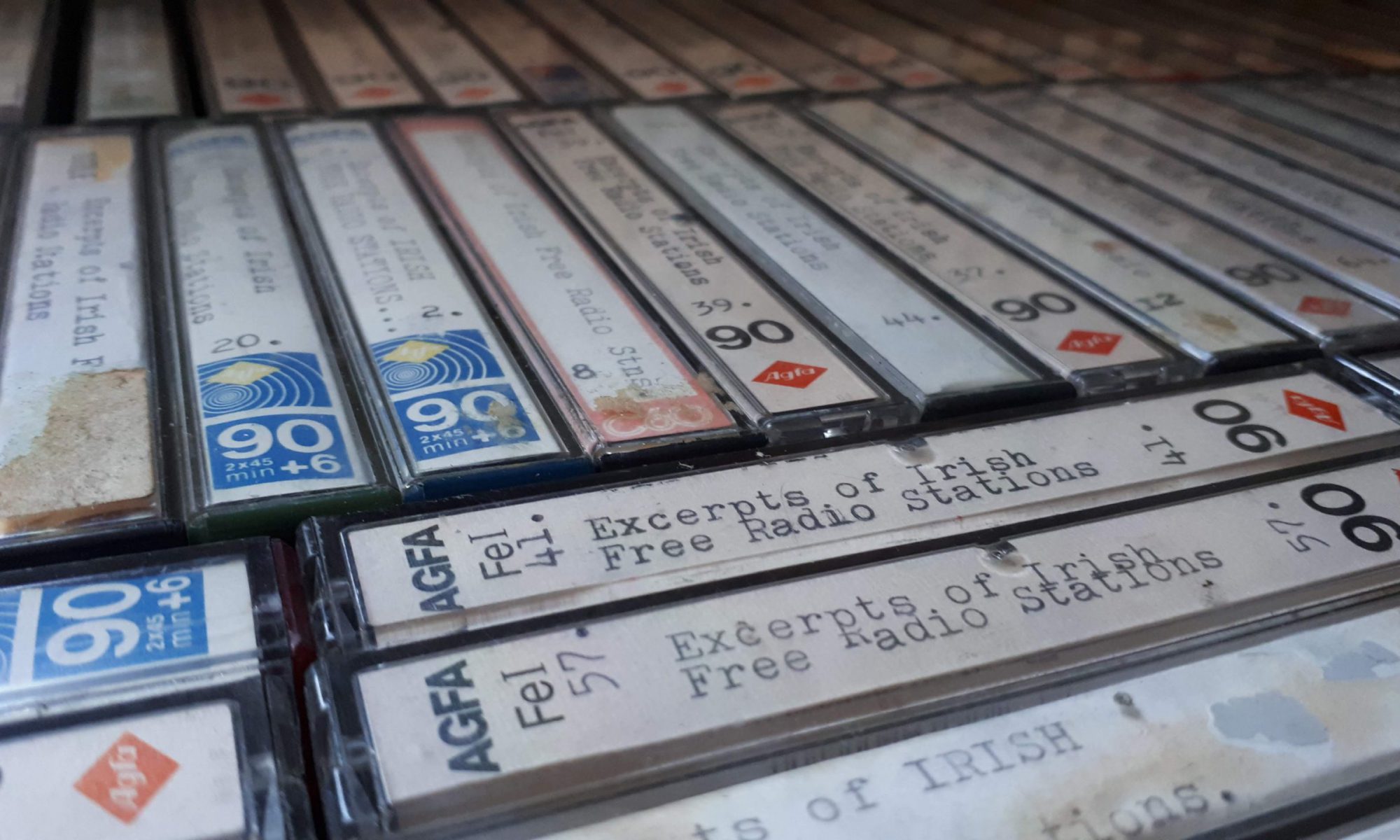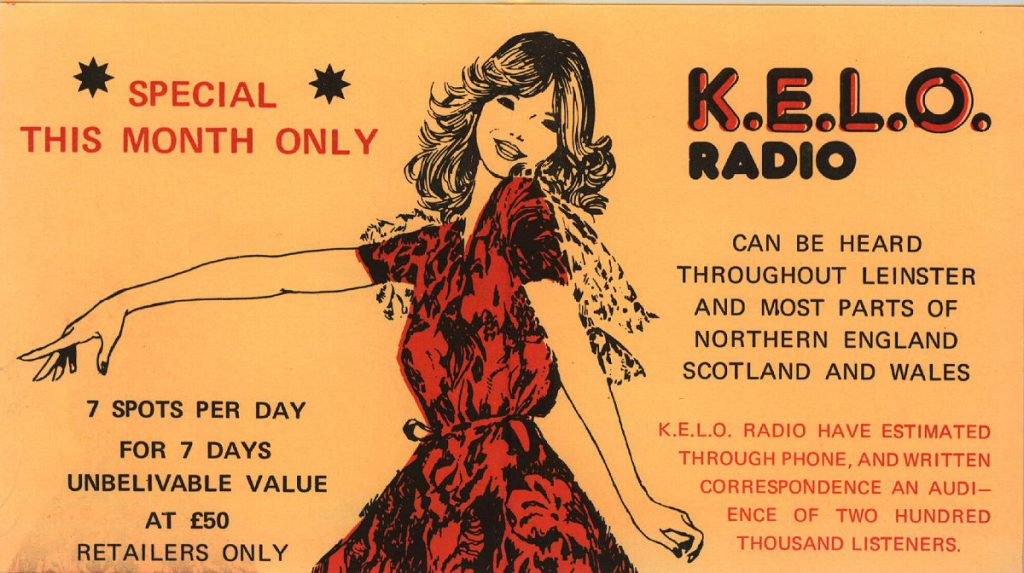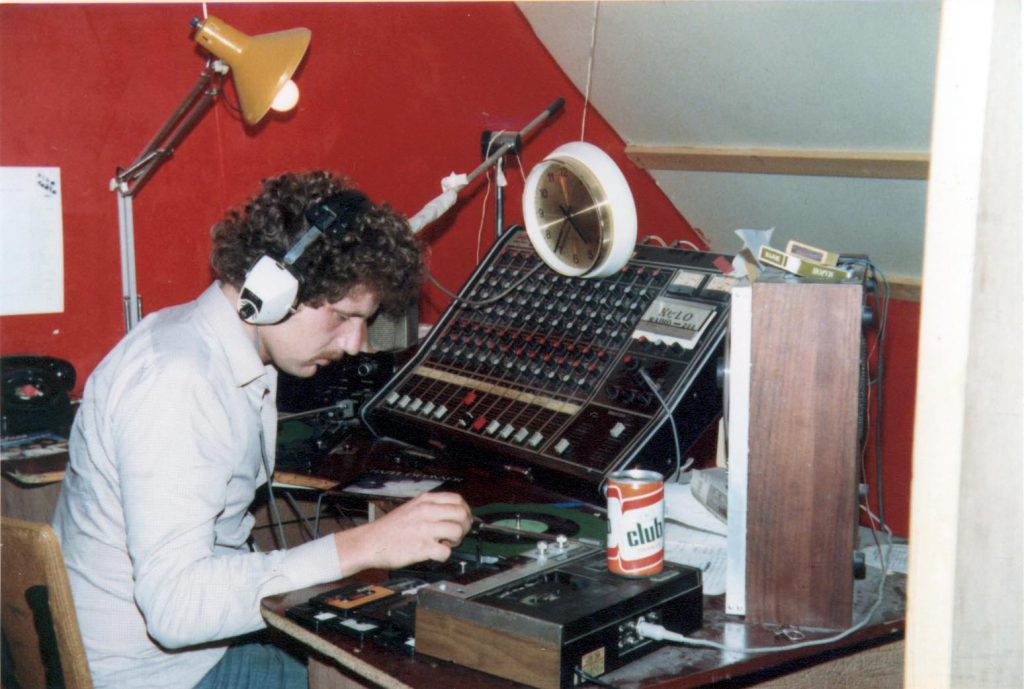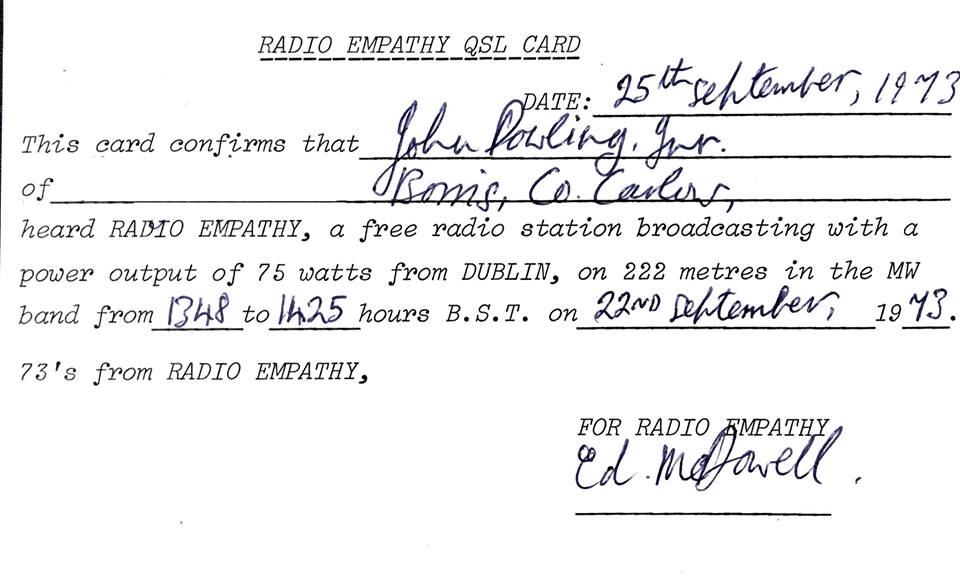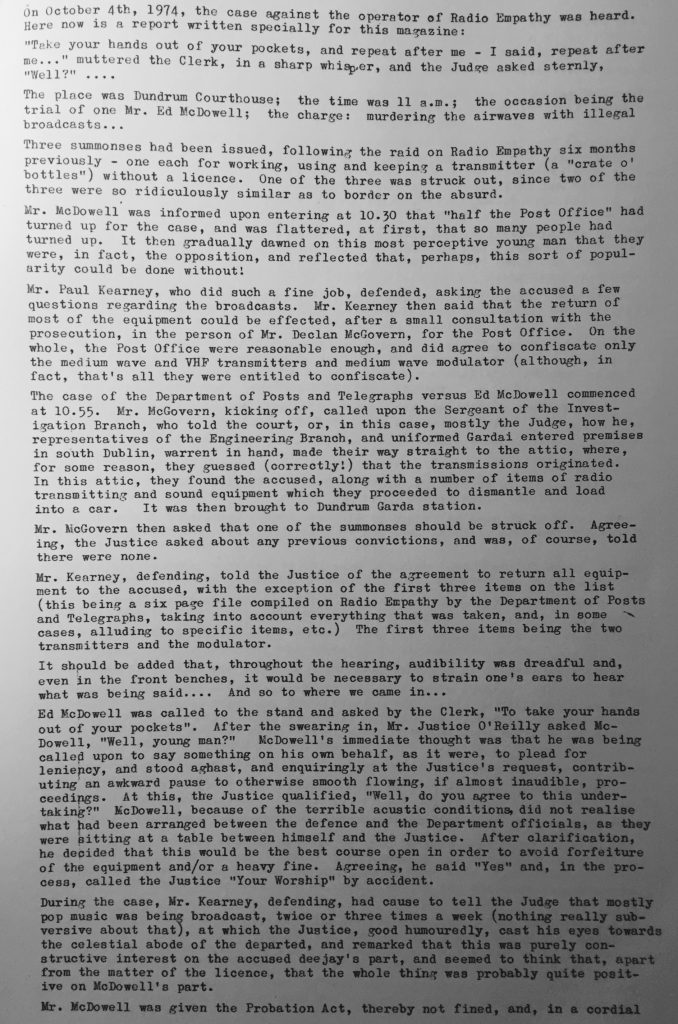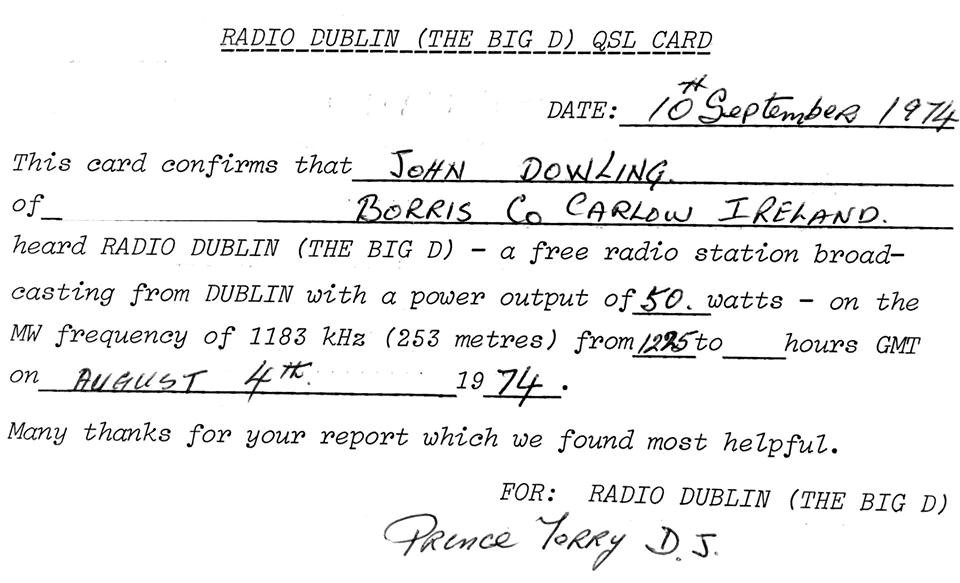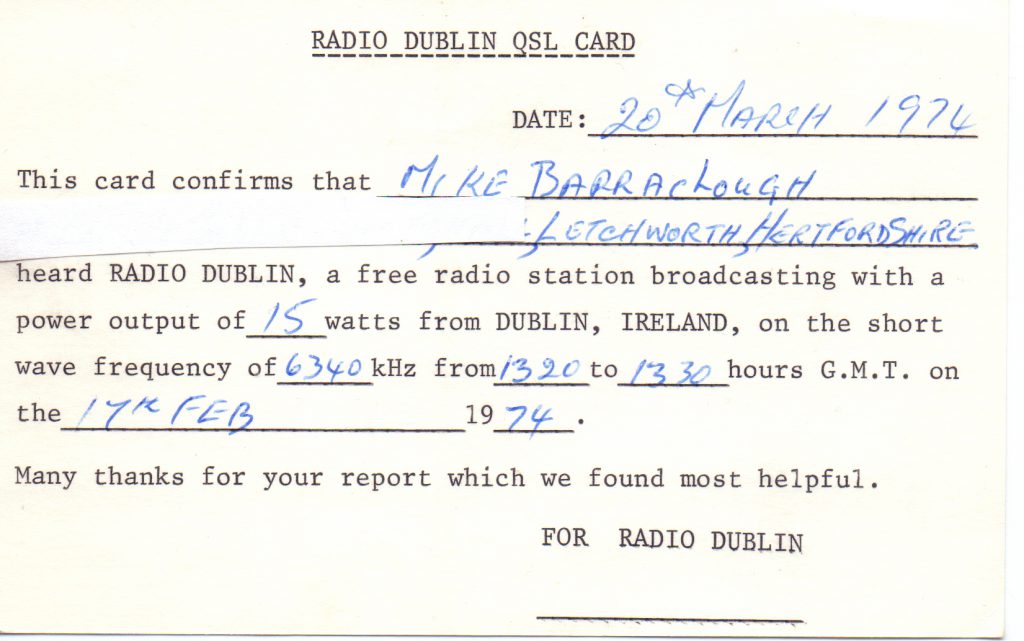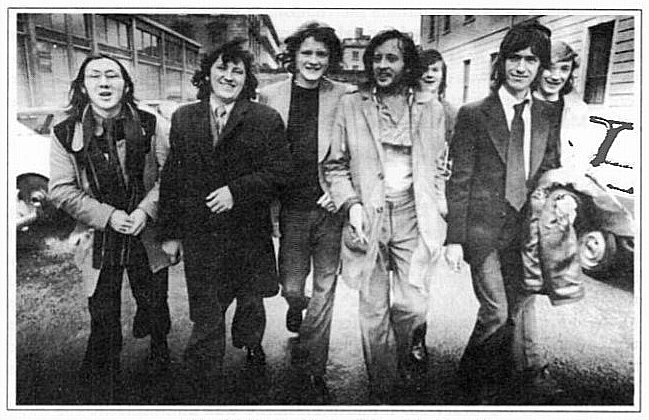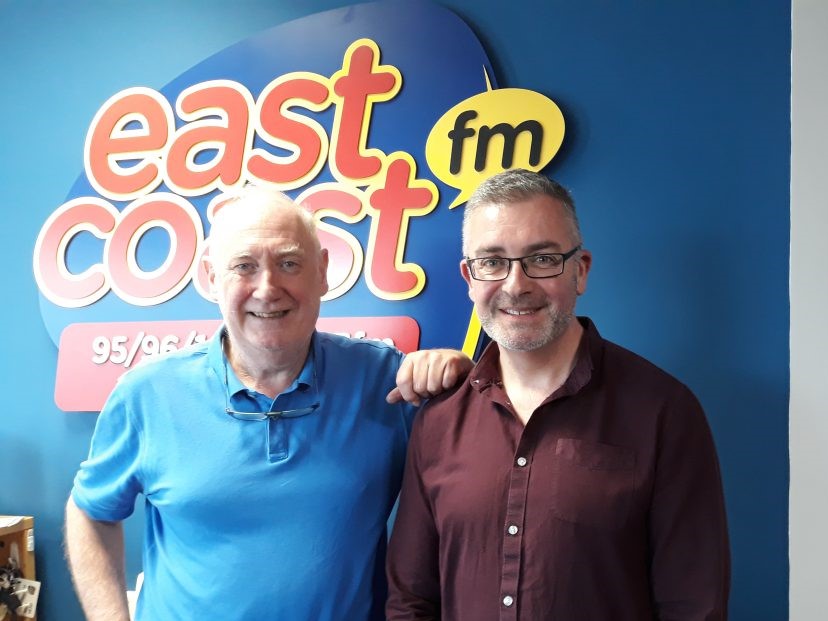Podcast: Play in new window | Download
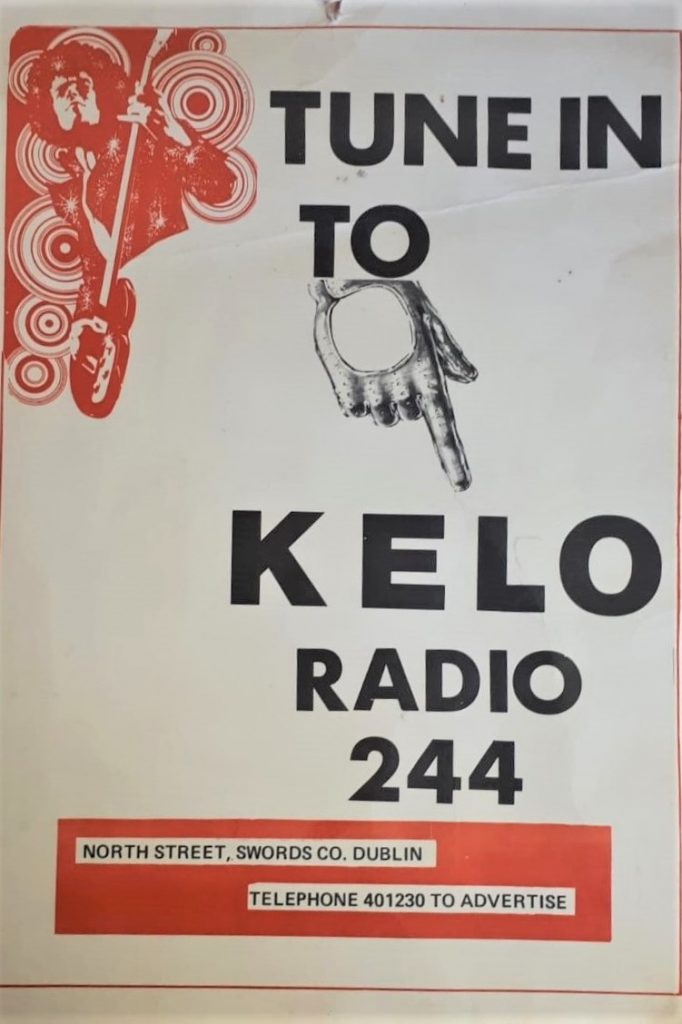
KELO began broadcasting officially on 16th March 1981 from Swords in north Co. Dublin. This recording is of veteran broadcaster John Clarke from the following day, St. Patrick’s Day. John, who went on to work in Radio Nova and RTÉ, remembers his early involvement in KELO and believes the station’s achievements should be recognised:
‘Pirate radio from the mid-70s was forever evolving, with every station that appeared seeking to be better than the previous one. In the early incarnations, studios were in bedrooms and outhouses, with enthusiasts arriving with whatever records they had and playing them. Some were hobby DJs, others had a passion for music, others had the additional influences of the pirate ships of the 60s, in particular Radio Caroline North during the day and Radio Caroline South at night. In Ireland from 1975 pirate radio (‘unlicensed commercial’ is a better way to describe the stations) was evolving quickly, talent was beginning to shine through, technology was advancing and engineers were creative. In the early 80s the landscape was preparing for the super-pirates (Sunshine and Radio Nova), but in advance of their arrival a new station began broadcasting on 244 metres. It was once said a station is as good as its signal, so it’s worth mentioning Peter Gibney who built a great rig. By 1981 the standard of DJ had vastly improved and likeminded people gravitated to each other. And so it was with KELO. I found a set of jingles (from an American station) and these were used, giving the station a professional sound. All the DJs recruited had worked their way through many of the early pirates. Davitt Kelly, an early pioneer, did the recruiting. Brendan Lawless was the station owner and its studios were located in north Co. Dublin (Swords). The studio was well-equipped and of a high standard in its day’.
‘But what was different and unique about the station was the music: it was Top 40 in format with the addition of quality album tracks. It had a playlist of 40 songs but not necessarily 40 hits of the day, it was the station Top 40. Everyone was in unison in wanting to play these core songs. We all contributed to albums that would sound good on the station. And there was free choice as well, four an hour, but every jock used their own knowledge to mix and match what was played across any given programme. So, there was a quality control to the overall sound. The standard of jock was good, with a few showing signs of real radio talent, some of whom went on the have long careers in the industry. Another piece of the jigsaw at KELO was that the station played records in sweeps of twos and threes and kept the mindless DJ patter to a minimum. It was the humble beginnings of ‘clutter free’, which later became a benchmark for the super-pirate Radio Nova (Nova for 5 years became one of the most successful commercial radio operations in these isles). KELO rightly deserves a chapter in the radio history books, as it did something different and became successful’.
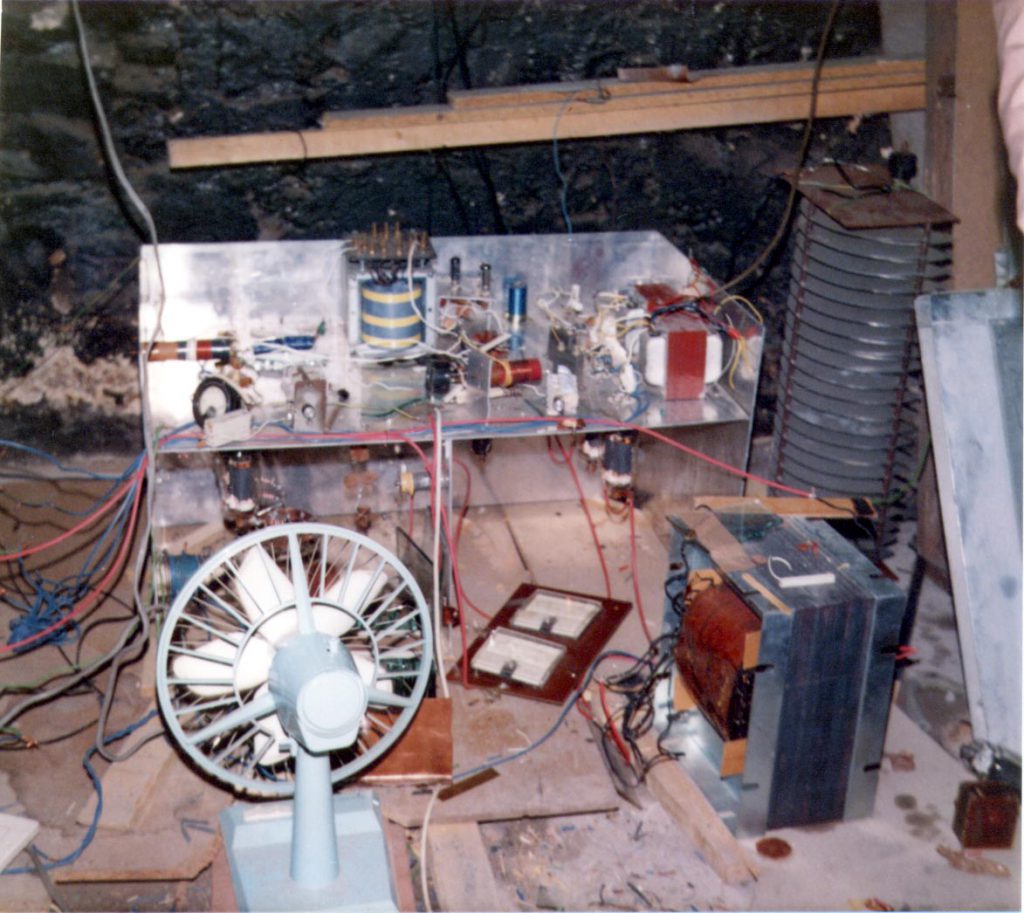
This recording of John Clarke begins at 1454 on 17th March 1981 and was recorded in Scotland by Ken Baird, hence the DX reception. Thanks to John and Ian Biggar for their assistance. Listen here to an interview with Dave Daly about his memories of KELO.
